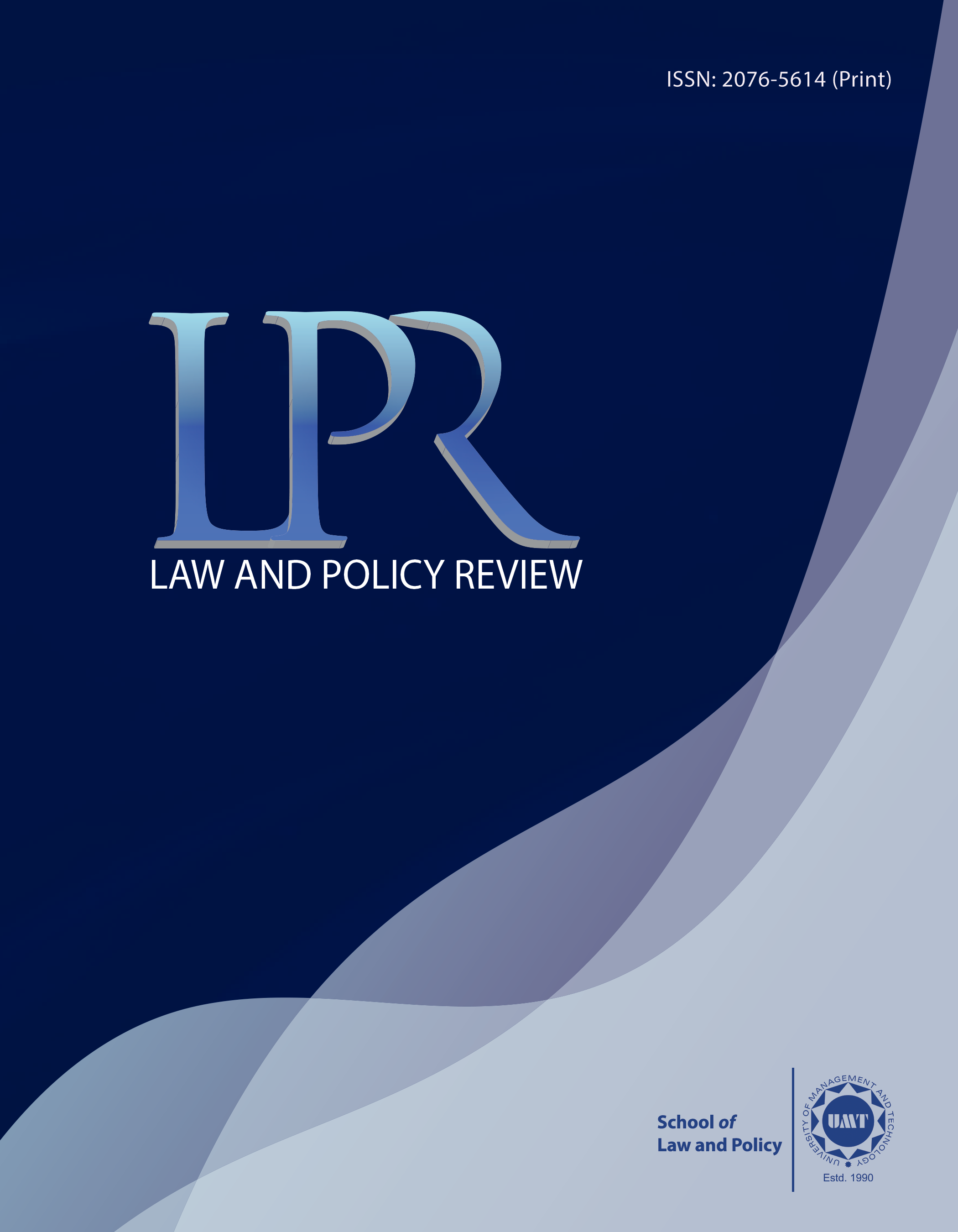Scope and Admissibility of Circumstantial Evidence in Criminal Cases in Pakistan
Abstract
 Abstract Views: 0
Abstract Views: 0
In a legal system, the courts have to rely on evidence for the dispensation of justice. The evidence may be either testimony of eyewitnesses or confession of the accused or other indirect evidence also known as circumstantial evidence. Circumstantial evidence holds greater significance in the dispensation of justice as many cases do not have enough direct evidence to prove the guilt of the accused. The court has to depend on circumstantial evidence because it establishes linkages between various events connecting the accused to the commission of crime. The principle of circumstantial evidence is that the circumstances presented should be capable of explaining the guilt of the accused only, while simultaneously ruling out any other hypothesis regarding their innocence. This research paper aims to explore the scope and importance of circumstantial evidence in criminal cases in Pakistan, considering the decisions of the higher courts of Pakistan. The study also examines the principles of the apex courts of Pakistan and other jurisdictions regarding circumstantial evidence, and the reliability of this evidence for the purpose of conviction.
Downloads
References
Ahmad, R., Hifazatullah, H., & Rahmna, B. S. (2012). Authenticity and scope of circumstantial evidences in the perspective of Islamic law. Interdisciplinary Journal of Contemporary Research in Business, 4(1), 824–828.
Alamin, M., & Rahman, M. G. (2015). An analysis on the provative value of evidence: A review. IOSR Journal of Humanities and Social Science, 20(11), 57–59.
Azeem Khan v. Mujahid Khan & Ors, SCMR 274 (2016). https://www.capitaldefencemanualpk.com/case/azeem-khan-anr-v-mujahid-khan-ors-2016-scmr-274/
Binyamin alis Khari and Others v. The State, SCMR 778 (2007).
Bosnia and Harzegovina v. Serbia and Montengro, International Court of Justice (2007).
Catherine, A. (2021). Detailed study of circumstantial evidence. BNW. https://bnwjournal.com/2021/05/30/detailed-study-of-circumstantial-evidence/
Choudhary, N. (2021, August 25). Circumstantial evidence: How is it dealt with in UK and the USA? Law Insider. https://www.lawinsider.in/columns/circumstantial-evidence-how-is-it-dealt-with-in-the-uk-and-the-usa
Director of Public Prosecutions v. Kilbourne, A.C. 729 (1973). https://www.coursehero.com/file/91705066/Director-of-Public-Prosecutions-v-Kilbournedocx/
Field, C. D. (1987). C D Field’s commentary of law of evidence (12th ed.). Delhi Law House.
Habib-ur-Rehman v. The State, PLD 1983 SC 286 (1983).
Hamid Mehmood & another v. The State, SCMR 1314 (2013).
Hashim Qasim v. The State, SCMR 986 (2017).
Imran Alias Dully v. The State, SCMR 155 (2015).
International Court of Justice. (1949). United Kingdom of Great Britain and Northern Ireland v. Albania. https://www.icj-cij.org/node/103099
Islam, M. (2021). Reflections on the law of evidence (3rd ed.). Kamrul Book House.
Kamal Kumar Datta and Anr. vs Nandalal Dubey, A.I.R Cal 37 (1928).
Keane, A., & McKeown, P. (2012). The modern law of evidence (9th ed.). Oxford University Press.
Khuda Bukhsh v. The State, SCMR 331 (1999).
Mahmood, S. (2012). The law of evidence (8th ed.). Legal Research Center Lahore.
McKeown, A. K. (2012). The modern law of evidence (9th ed.). Oxford University Press.
Muhammad Arshad v. The State, SCMR 1187 (1992). https://www.supremecourt.gov.pk/downloads_judgements/j.p._335_2017.pdf
Muhammad Ishaq v. The State, SCMR 135 (2009).
Murphy, P., & Glover, R. (2011). Murphy on evidence (12th ed.). Oxford University Press.
Nasir Javid & Anr v. The State, SCMR 1144 (2016). https://www.capitaldefencemanualpk.com/case/nasir-javaid-anr-v-state-2016-scmr-1144/
Naveed Asghar and 2 others v. The State, PLD 2021 SC 600 (2021).
Nicaragua v. The United States of America, 1986 I.C.J. 14 (1986). https://www.icj-cij.org/case/70/judgments
Ratanlal & Dhirajlal. (2018). The law of evidence (25th ed.). Lexis Nexis.
Shams-Ud-Din v. Muhammad Shahbaz Qammar, SCMR 427 (2009).
Sharad Birdhi Chand Sarda vs State of Maharashtra, AIR 1984 SC 1622 (1984).
Singh, D. A. (1990). Principles of The Law of Evidence (17th ed.). Central Law Publications.
Suman, S. K. (2015, April 4). The concept and historical background of evidence law. Academike. https://www.lawctopus.com/academike/concept-historical-background-evidence/
Talib Hussain v. The State, SCMR 1538 (1995).
Tapper, C. (2010). Cross and tapper on evidence (12th ed.). Oxford University Press.
Copyright (c) 2023 Imtiaz Ahmed Khan, Ashfaq Hussain

This work is licensed under a Creative Commons Attribution 4.0 International License.
LPR follow an open-access publishing policy and full text of all published articles is available free, immediately upon publication of an issue. The journal’s contents are published and distributed under the terms of the Creative Commons Attribution 4.0 International (CC-BY 4.0) license. Thus, the work submitted to the journal implies that it is original, unpublished work of the authors (neither published previously nor accepted/under consideration for publication elsewhere). On acceptance of a manuscript for publication, a corresponding author on the behalf of all co-authors of the manuscript will sign and submit a completed the Copyright and Author Consent Form.





